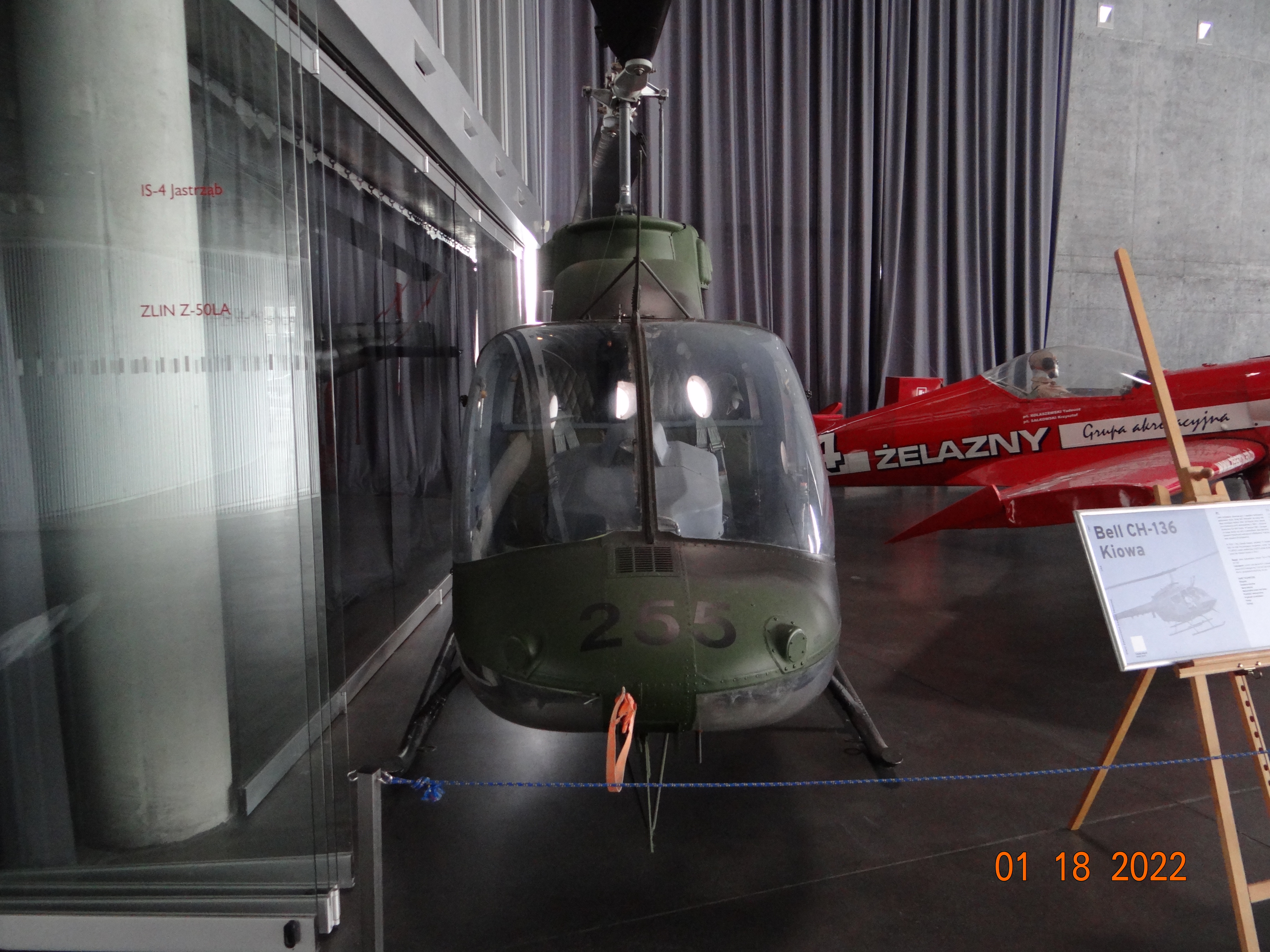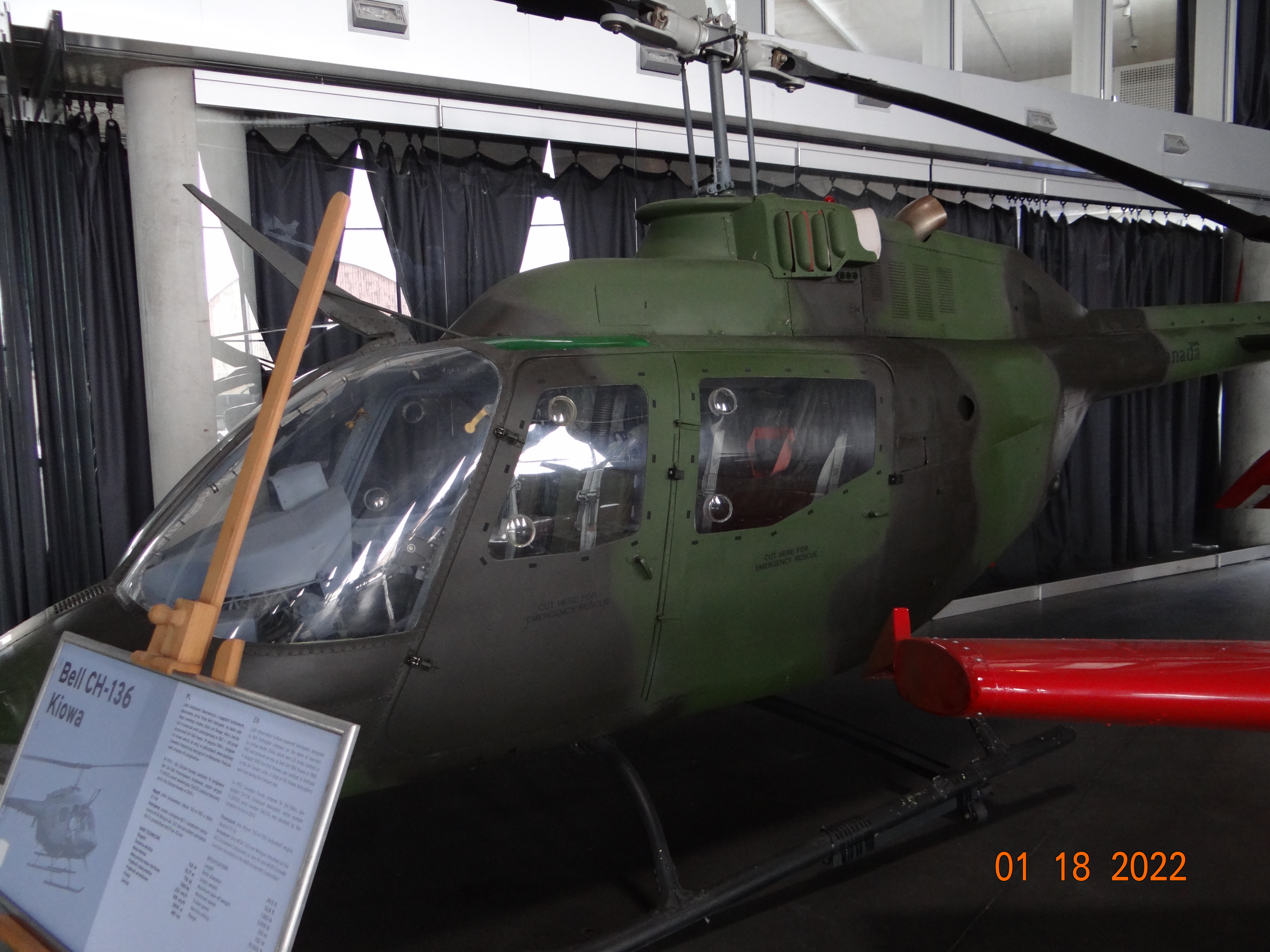Kraków 2010-11-30
Bell CH-136 Kiowa / Bell OH-58 A Kiowa.
In 2010, the Polish Aviation Museum in Krakow received a new exhibit, the Bell CH-136 Kiowa helicopter, which was used by the Canadian military aviation. The U.S. designation for the helicopter is the Bell OH-58 Kiowa.
The Bell OH-58 Kiowa is a family of single-engine, single-rotor military helicopters used for observation, utility and direct fire support. The helicopter was developed in the USA by Bell Helicopter. The Bell OH-58 Kiowa helicopter is closely related to the civilian Model 206A JetRanger helicopter. The Bell OH-58 helicopter (factory designation D-250, competition designation YHO-4) was developed at the beginning of the 60s as a light observation helicopter (LOH). 5 prototypes were built. The first flight was made on December 8, 1962. The Bell helicopter lost to the competitor Hughes OH-6 Cayuse helicopter.
Therefore, in May 1965, Bell created the Model 206 A JetRanger helicopter, offered for civil aviation. In the new model, the loading space has been significantly increased. The helicopter gained in beauty and functional qualities, and the Bell company quickly won orders from civilian users.
In 1967, Bell again submitted a proposal for a light helicopter for the USAF. Thus, in 1969, the Bell OH-58 A Kiowa helicopter, similar to the Model 206 A JetRanger, was introduced into military service. The helicopter was designated by the US Army as the OH-58A Kiowa, in honor of a Native American tribe. Bell continued to refine the helicopter, culminating in the OH-58 F version. The OH-58 D version received a mast-mounted sight above the main rotor (MMS). Helicopters took part in the fighting in Indochina. OH-58 helicopters are adapted to perform armed reconnaissance missions and provide fire support to ground forces. A feature of most OH-58 helicopters are knives mounted to the fuselage, designed to cut ropes or wires.
For the OH-58 C version, a two-blade main rotor was used. From the OH-58 D version, a four-blade rotor and a different control system for this rotor are used.
The OH-58 helicopter was produced mainly for the United States Army. Only two months after the type entered service, it was first used in the Vietnam War. The U.S. Army has made extensive use of various versions of the OH-58 helicopter for decades. It wasn’t until 2017 that the U.S. Army decided to retire the remaining OH-58 helicopters and replace them with newer rotorcraft, such as the Boeing AH-64 Apache and Eurocopter UH-72 Lakota.
OH-58 helicopters were exported to Austria, Canada, Croatia, Dominican Republic, Taiwan, Saudi Arabia and Greece. The helicopter was also produced under license in Australia.
The Bell 206 A helicopter made its first flight on January 10, 1966. Serial production of the OH-58 A helicopter started in May 1969. The OH-58 D helicopter made its first flight on October 6, 1983. The last helicopter was produced in 1989. The modernized OH-58 F helicopter made its first flight on April 26, 2013.
In 1970, the Canadian Armed Forces ordered 74 Bell OH-58 A helicopters to replace the Hiller UH-12 Nomad helicopters and Cessna L-19 Bird Dog aircraft. The helicopters were delivered in the period 1971 – 1982. The helicopters were used until 1995.
The Bell CH-136 Kiowa helicopter presented at the Polish Aviation Museum in Krakow, serial number 71-20920, registration number 136255, was donated by the Canadian Forces in 2010.
Data T-T OH-58:
Crew of 2 pilots. Length 42 ft 2 in (12.85 m). Height 12 ft 10 in (3.93 m). Curb weight 3.829 lb (1.737 kg). Takeoff weight 5,500 lb (2,495 kg). Main rotor diameter 35 ft 0 in (10.67 m). Main rotor area 962.11 sq ft (89.42 m2). Top speed 49 mph (240 km/h, 129 kn). Cruising speed 127 mph (204 km/h, 110 kn). Range 161 mi (556 km, 140 nmi). Flight time two hours. Operating ceiling 15,000 ft (4,575 m).
Driven by one Rolls-Royce T703-AD-700A turbine engine, 650 hp (485 kW).
Written by Karol Placha Hetman



